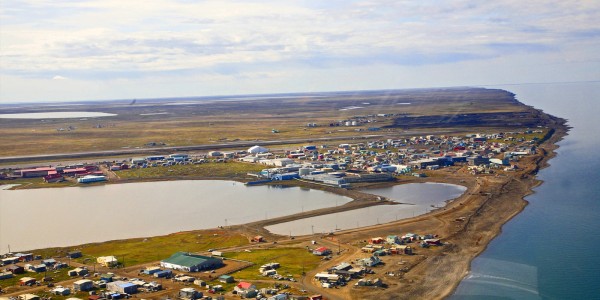
Some of the oil industry’s biggest supporters got a lot more than they asked for in the Trump administration’s latest offshore drilling proposal. In early January, the Interior Department proposed opening up the vast majority of Alaska’s offshore areas to oil leasing. Senator Lisa Murkowski, Governor Bill Walker and others are already asking Interior to scale back, limiting oil lease sales to the Beaufort and Chukchi seas and Cook Inlet.
Now, Voice of the Arctic Inupiat (VOICE), an advocacy group of Inupiat leadership organizations across the North Slope, including tribal councils, municipal governments, Alaska Native Corporations and others, is also weighing in.
To be clear, VOICE isn’t against oil development. Last year, the group made a big push to allow drilling in part of the Arctic National Wildlife Refuge. When it comes to offshore oil development in the Arctic, VOICE doesn’t yet have an official position.
But it does have a position on how Interior went about its latest proposal.
In a recent letter to Interior Secretary Ryan Zinke, VOICE wrote, “with respect to the Arctic [Outer Continental Shelf] announcement on the [Draft Proposed Program], we feel the concerns of local organizations were ignored and that deeply disturbs us.”
VOICE chairman and Arctic Slope Regional Corporation president Rex Rock Sr. said, ”we expressed our concerns and we felt that we were being ignored, such as the Barrow and Kaktovik whaling areas and the 25-mile Chukchi Sea buffer.”
In the letter, VOICE writes those particular areas are “critical to Northern Alaska food security” — they’re used by local communities for whaling and other subsistence hunting.
Interior’s draft proposal would allow oil drilling in these waters, although the proposal states that excluding the Barrow and Kaktovik whaling areas and the 25-mile Chukchi Sea coastal buffer “may warrant further analysis.”
Rock said North Slope leaders had already made it clear to the federal government that those areas should stay off limits.
“We had already worked this with the past administration and said, ‘here are the areas that we ask that you stay away from,’” Rock said.
Rock added, “we’ve always said that for us consultation is huge, you need to come in and talk to the people that are here.”
VOICE’s letter concludes that Interior decisions affecting the North Slope “must be based on consultation, coordination and engagement with Alaska Natives.”
The Interior Department has not yet responded to a request for comment on the letter. However, Interior has stressed the plan is not final; it’s still possible to remove many of the areas where offshore drilling is currently proposed.
A public hearing on Interior’s draft offshore drilling plan proposal is set to take place in Anchorage on February 21.
Reporter Ravenna Koenig contributed to this story.
Elizabeth Harball is a reporter with Alaska's Energy Desk, covering Alaska’s oil and gas industry and environmental policy. She is a contributor to the Energy Desk’s Midnight Oil podcast series. Before moving to Alaska in 2016, Harball worked at E&E News in Washington, D.C., where she covered federal and state climate change policy. Originally from Kalispell, Montana, Harball is a graduate of Columbia University Graduate School of Journalism.




